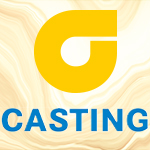

Read an article from CP+T 04/2020. The industry is increasingly demanding components that can be manufactured in series using metal 3-D printing. However, this is not yet possible without restrictions. Mark Cook, Vice President Metal Products at 3D Systems, explains why and what still needs to be done.
For which metal components can series production using an additive process be considered?
Mainly for the production of high-quality components for special applications, for example in the aerospace industry. 3-D printing makes it possible to produce these components with a completely new designed geometry. Both the material and the application remain the same. However, a component that leaves the printer is typically not ready for use and post-processing is often necessary.
Is this the reason why 3D-Systems became a partner of GF Machining Solutions?
Yes! The colleagues at GF Machining Solutions are experts in subtractive metalworking in series production, whereas we at 3D-Systems specialize in additive manufacturing. Together with GF, we can now take a holistic view of the entire machining process and integrate the previously different processes and make them more efficient.
Where are the hurdles to be expected?
In its early years, additive manufacturing was an enabling technology that was created and used in the development departments. Now this manufacturing process has arrived in the industrial production environment. GF Machining Solutions has a long history in this field, and the company offers high-quality production machines and tools. 3-D printing manufacturers generally lack the know-how for industrially used tools for which criteria such as total cost of ownership, reliability, repeatability, up-time or quality are required. At 3D-Systems, we are now benefiting from the knowledge that GF brings to the table.
Can you give us a concrete example?
A good example is GF‘s Systems 3R clamping technology, which makes it possible to transport components from one work center to another or from one module to another. We integrate these clamping systems into our 3-D printers, the DMP Factory 500 and DMP Factory 350. 3-D metal printing starts on a build plate. Usually, the component must then be removed from this plate and mounted in a processing machine for further processing. One of the major challenges here is understanding the reference points. As soon as the component is removed from the printing plate, the reference point is also lost. The clamping mechanism that we are now integrating into our plates gives us this zero point reference. So we can now produce large metal parts, take them out of the printer and insert them into any module. So we can go directly from a 3-D printer to a milling machine and continue the machining. This not only saves time, but above all increases the precision and quality of the component.
Do you offer other solutions?
We can now also produce many different components at the same time. At EMO 2019 in Hanover, Germany, for example, we exhibited our Factory 500 printer with a printing plate containing twelve individual components. Using System 3R, we can build mini printing plates for each individual part, each equipped with its own clamp and its own zero point reference. In this way, each component can be easily passed on for post-processing. And this is just the beginning of the development. Another example are our removable print modules. As soon as the printing of a component is complete, the user can remove the first module, insert the second and immediately continue printing.
What do you think needs to be done to establish serial printing in the industrial environment?
There is still a lot to do! For example, software solutions for quality assurance must be integrated into the manufacturing systems, but also the traceability of the individual components must be ensured. Although automation solutions for this already exist today, they are not yet fully integrated. Our DMP inspection software, for example, makes it possible to check the quality of a layer already during the printing process. This is not really new. What is new is that these solutions can also be applied to additive manufacturing, in the critical industrial environment of series production. This applies not only to us, but also to our competitors.
What solutions can be seen in two years?
Over the next two years, we will learn above all how we can also use additive manufacturing to deliver the high quality demanded by the industry. The next step will then be to automate the process, such as transporting the parts from one work cell to another. There will perhaps be robots that take the components out of the printer and place them in the next cell. There are already solutions for all sub-steps, integration and automation will now follow!
The interview was conducted by Ute Drescher and first published on www.konstruktionspraxis.vogel.de

